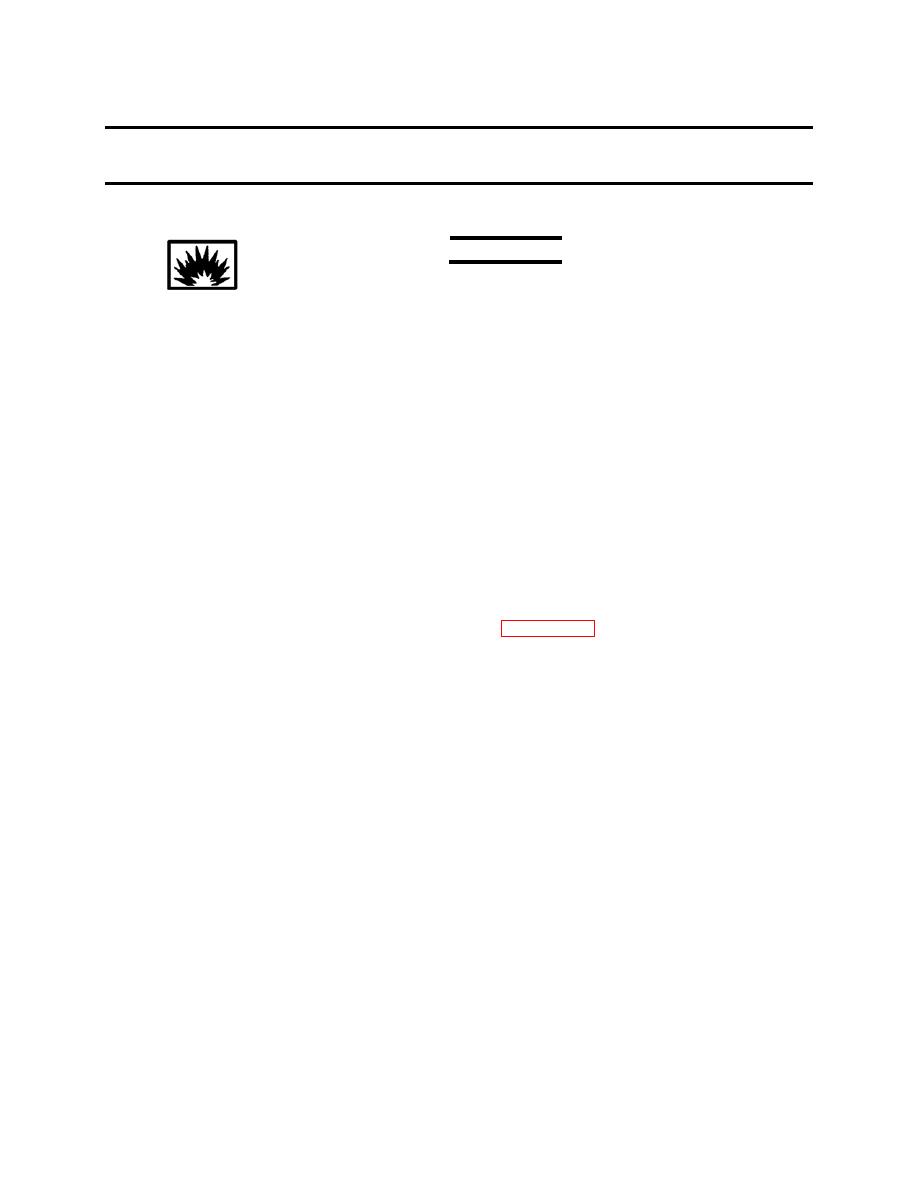
TM 9-4520-272-14&P
OPERATOR, FIELD AND SUSTAINMENT MAINTENANCE
LARGE CAPACITY FIELD HEATER (LCFH)
OPERATION UNDER UNUSUAL CONDITIONS
OPERATION IN EXTREME SAND, DUST, AND/OR HIGH WINDS
WARNING
The heater has been designed to operate in dusty or sandy conditions.
However, some forms of very fine dusts may be explosive (e.g., flour,
chaff, coal, etc.). Before operation of the heater in dusty conditions, an
attempt should be made to identify the dust type to insure that it is not
explosive in nature.
If possible, the heater should be positioned to minimize the amount of dust, sand, or any other material in
the area that could be pulled into the heater by the fans.
When operating in conditions of extreme sand or dust, ensure that the air supply and return ducts are
securely attached to the heater and the ducts are securely connected to the shelter.
If high winds are expected, the ducts may require additional anchor or tiedowns to prevent high winds
from shifting the equipment.
During refueling and at regular intervals between refueling, the heater and its ducts should be inspected
for a buildup of dust or sand that would cover the heater or block the ducts or pipes.
During operation in extreme sand or dust, the fuel filter should be changed at twice the frequency noted in
the Preventive Maintenance Checks and Service detailed in WP 0018 00.
Special care should be used during refueling to prevent sand or dust contamination of fuel, fuel supply,
and fuel hoses.
OPERATION IN EXTREME RAIN OR HUMIDITY
When operating in conditions of extreme rain or humidity, it is recommended that the heated air outlet
duct and air supply inlet duct be secured to the heater and the ducts securely connected to the tent.
Under no circumstances should the heater be positioned in standing water. Heater site should be graded
slightly, if necessary, to insure that water runs away from heater and tent.
The inlet and outlet ducts and the heater itself might need to be raised higher off the ground to prevent
water from entering the heater. The base contains three compartments in which the battery, combustion
blower, and electronic controller are located. These compartments must not be submerged in standing
water. If the heater is to be raised above ground level, make sure that water cannot run along ducts or
along the operator control box cable and enter the tent.
If high winds accompany rain or humidity, additional anchors or tiedowns may be required to prevent
winds from shifting the equipment.
During refueling and at regular intervals between refueling, the heater and ducts, and exhaust pipe should
be inspected for a buildup of snow, dust, or sand that would cover the heater or block the ducts or pipes.
Any buildup should be removed.
0006 00-1

